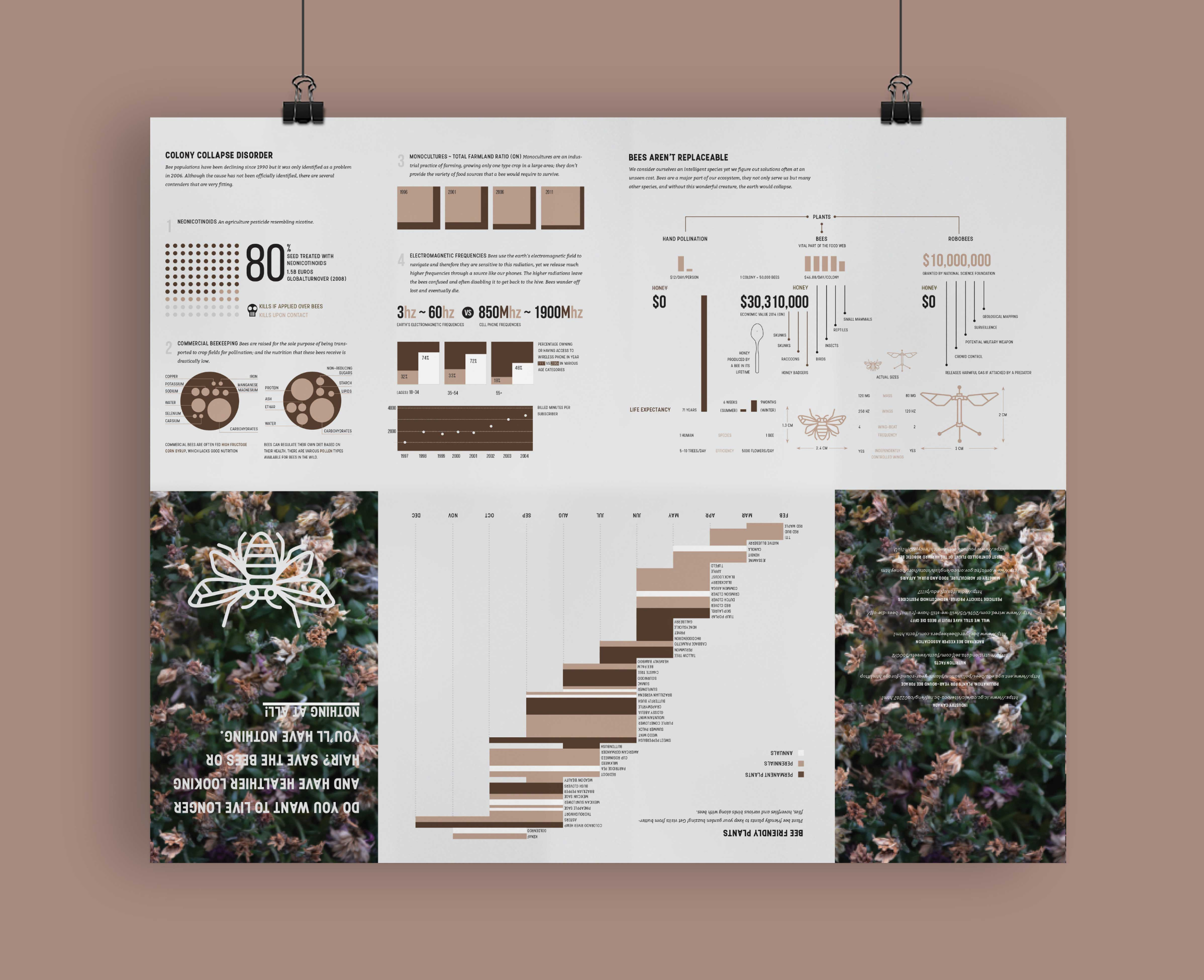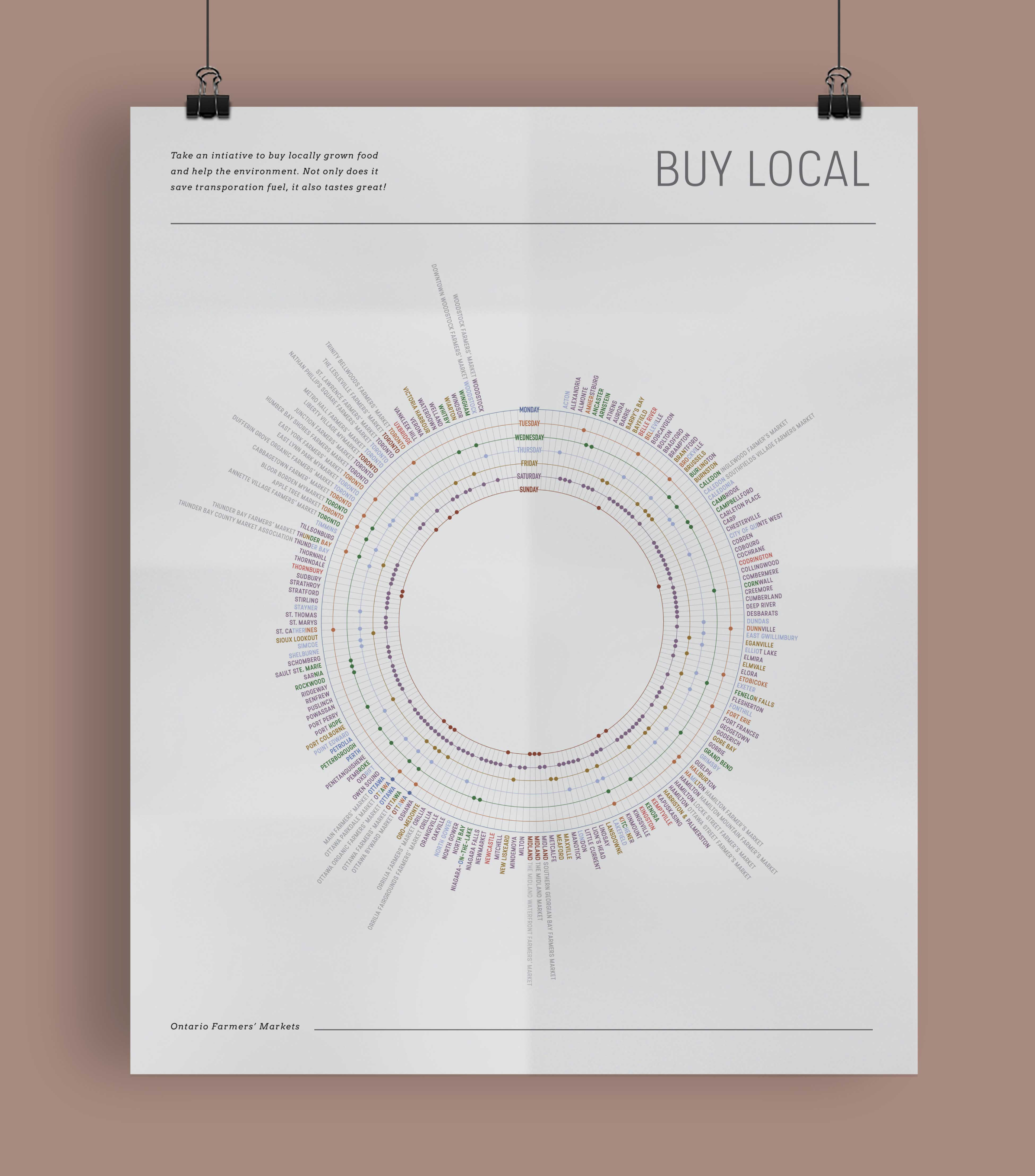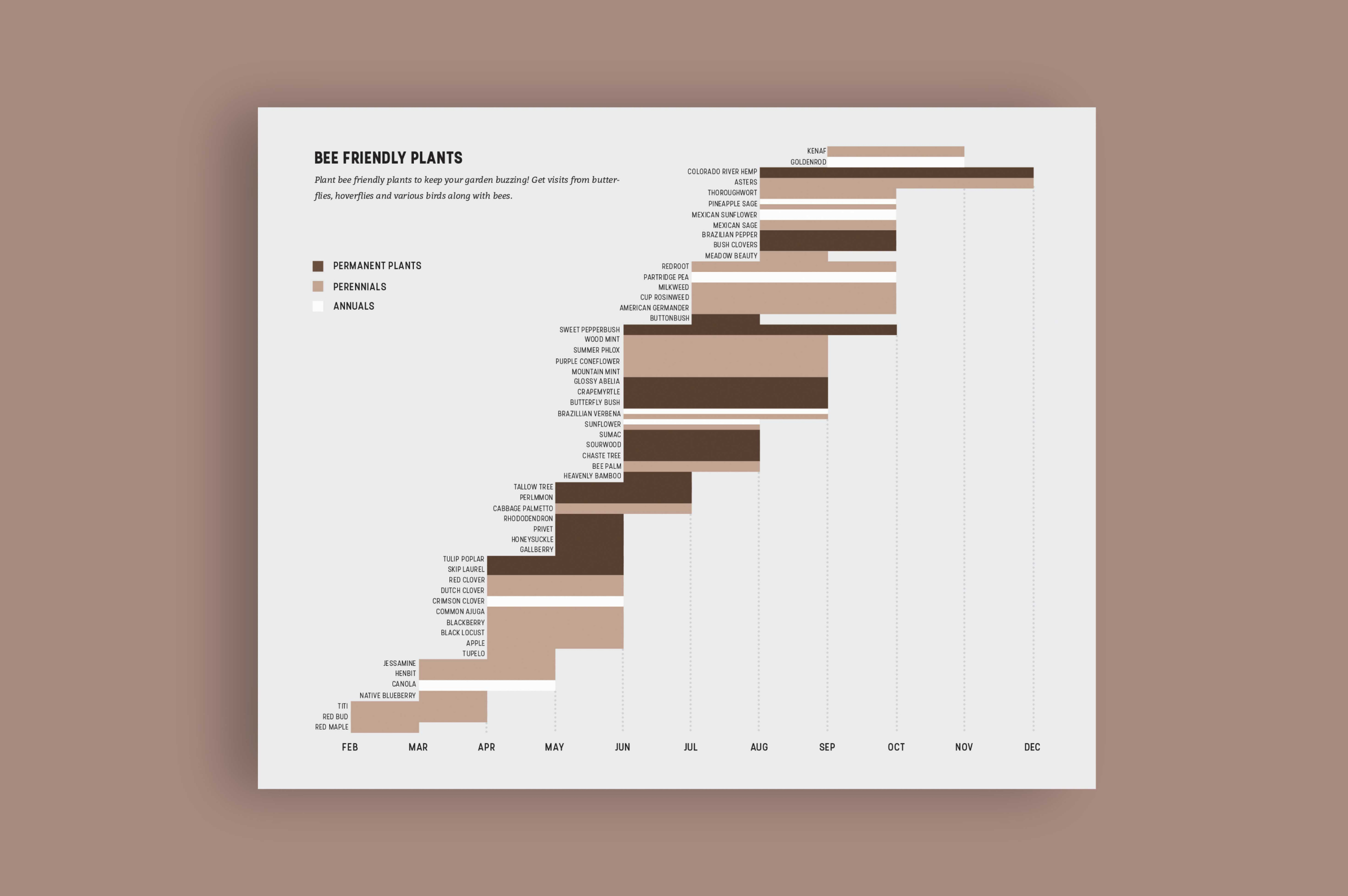
Personal project
Save the Bees
The infographic explains why bees are vanishing, why they can't be replaced by tech, and what we can do to help rejuvenate their population.
Bee populations have been declining since 1990 but it was only identified as a problem in 2006. One-third of the food depends on bee pollination yet these crops poison the bees themself.

Front
Our farming practices have been destroying our ecosystem, monocultures provide little nutrition to the bees, and the use of pesticides and insecticides are either killing bees on contact or over time. Businesses like commercial beekeeping have emerged which manually transport bees to the crops for pollination, but the bees are fed low-protein diets and kept in horrible conditions resulting in even shorter life spans.
I found it important to not only identify the causes of decreasing bee populations but also a possible solution that a group of engineering students at Harvard are working on. Although Robobees hold potential, bees do more than pollination.
Back
As a result, I proceeded to add sustainable solutions which readers could implement in their lives, which are growing bee-friendly plants and buying local organic produce.

It is estimated that one-third of the food that we consume every day relies on bee pollination. But these crops are sprayed with lethal chemicals which bees unwillingly ingest. Because supply-demand regulates the economy, it is in consumers' interest to change their behaviour to foster change in the suppliers' behaviour. It is much harder to shake billion-dollar pesticide corporations who have eluded farmers into using harmful chemicals on their crops.



:)
:)
Social media
©2021